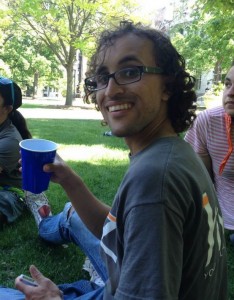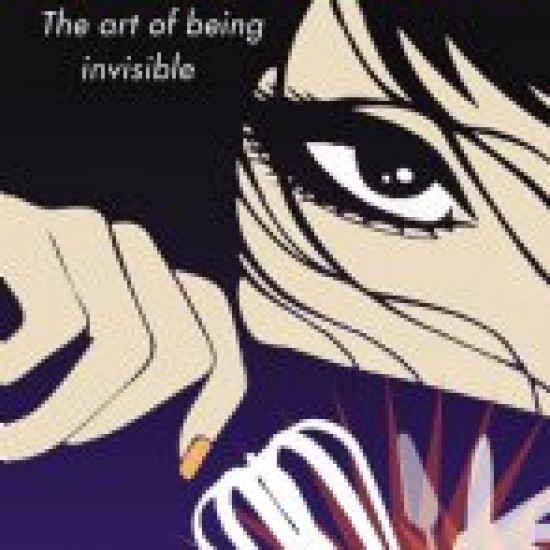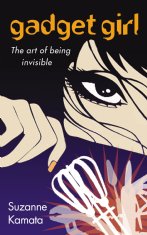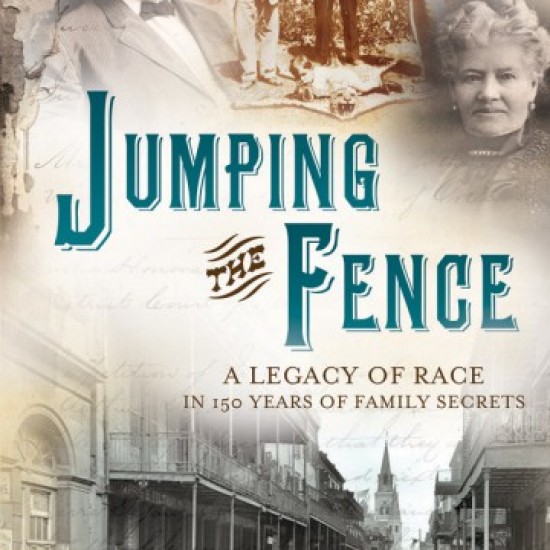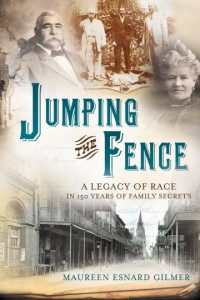My childhood area of New York bordered the remnants of the Puerto Rican Loisaida, and edges of Chinatown. As a result, our class was a mix of working class Asians and Latinos, along with Italians and African Americans. My kindergarten class was a reflection of this composition, which would have made any proponent of diversity happy. Our cognition of race at this point was limited to what we interacted with in reality. We could perceive a correlation of skin color to racial identity—lighter individuals being white, and darker individuals being black, with Asians and Latinos having their own looks—and this correlation was hammered home by interactions with the families of students. If one’s identity was not made immediately clear by their body, the sign to be read was the body of the person who was generally responsible for the student.
This is where the fluidity of my own racial identity began. In my mind (and the minds of my five year old peers) I was white. My skin color might have identified me as Latino, but my mother was a working class, Western European woman and that identity became my own. Indeed, my first memory of directly engaging race was mentioning to my mother something about how I was white. To which she responded that my impression was a half-truth; I was part white, but my dad was also Jamaican and Chinese.
This was not the biggest surprise in my mind. I was cognizant of a difference between my mother and myself, but this difference was brought out by social interactions. What enforced the conclusion of my whiteness in the classroom was the presence of my mother, a white woman. However, this was not enough for all people outside the classroom and it was the interactions with these people that made me suspect there was more to my identity. A prime example: there was a park near our apartment in which I regularly played. While the children played on the jungle gym, or by the sprinklers, our parents would gather and have the sorts of conversations adults have. Years later, my mom informed me about the subject of one such conversation: another white mother had seen me with my mother, and was not deceived. Thus, once I was out of earshot, she asked, “Where did you get him from?” This woman thought that my mother had a contact with a Latin American adoption agency.
It was not a moment of malicious racism, and the woman became apologetic upon realizing that we were indeed biologically related, but it did reflect a number of normative assumptions she had made and was comfortable with sharing in public. Her question did not entertain the notion that a biological relation was possible—it made the normative assumption as one of adoptive kinship. This is reflective of a historical consciousness in which the world makes more sense maintaining the strict lines that bind our conceptual categories of race to empirics, rather than suggesting that the lines between them could change.
Of course, it is difficult to say whether biological relations ought to be presumed as normative ones for society, but what I wish to highlight is the selective standard by which this question of normativity is raised. It was not any other relation between child and parent that was question—it was my mother and myself. This is a question continually raised by people who think they are clever: “How do you know what you are if you never knew your dad?” The separation of empirical verification and conceptual trust is one that exists in every parental relationship. For all any of these people know, their parents had lied about being their parents, and were actually ex-KGB operatives. These explanations are rejected because they seem more complex and difficult to maintain. However, when it comes to multi-racial identity, everything that does not have immediate empirical verification, is available for strict scrutiny.
These forms of “benign” racism were equally prominent within my peer group. In fact, by 2nd grade, my peers had become incredibly good at creating groups based on ethnicity, and policing those lines. Throughout my interaction with Asian friends, for example this was a common response I would receive when they heard I was Chinese: “No you’re not. You don’t look it!” This was another simple negation, one that seems benign, as it came from seven year olds with little world experience. We would expect this of children in the same way we might expect a child to disbelieve in purple potatoes until presented with one. But people are not potatoes, and this was indicative of a larger problem—namely the inability to differentiate between races beyond empirics. These early experiences with empirical validation of race would later be the source of my peers’ conceptual ideas of race. This wasn’t a failure of the individual, but one in which the American state itself has been incapable of understanding racial lines, both conceptually and empirically, as moving targets.
When a student learns history in elementary school, the typical revisionist charge is this history is the “old dead white dude” variant of history. My only contribution to this discussion is that even in the most virulent threads of historical fantasy, in which the Civil War was one of “Northern Aggression” there is some acknowledgment that other races existed, if only to be subservient to the white one. Yet, both revisionists and traditionalists police these very lines that we learned as children: races do not mix. Even the more progressive histories, based on popular historians like Howard Zinn, still spend very little time pointing out that Multi Racial identities exist[1]. And when this absence of mention is combined with the tradition of separation, it is no surprise that children cannot conceptualize Multi Racial identity as something possible. My identity was practically a unicorn—non-existent.
Part of this erasure is a refusal to engage with the reality in which we exist, and the history behind it. In middle school, our humanities curriculum was well developed, with emphasis on primary sources, and even a trip to the NY Supreme Court to argue the case for slave reparations. But there was always a sense that we were playing with dead ideologies—this court case was partially imaginary, in the sense that none of us were forced to consider race as an element of the present. I remember some peers being very surprised to hear that racism still existed as a politically powerful force, as though racism ended with Brown vs. Board of Ed. The failure of our humanities education was the inability to link this history with the social structures of the present[2].
This connection was made for seldom few of us as children, but I would suggest that the living experience of dealing with racial discrimination, combined with the historical knowledge of the past (and here, parents become teachers as well—for example, people who fought for civil rights) means that non-white children make this connection much more quickly. There are a variety of studies that show white students tend to be less aware of race as a profoundly influential factor in the possibility of advancement. By denying these connections, or at least failing to address them, the later work of “diversity” becomes exponentially harder—something I will return to in a later post.
My first engagements in which my peers became actively aware of the political stakes for race-thinking, and the ideologies it spawns was in high school. This began a long journey, one in which I had to begin navigating how I wanted to identify, and as what others wanted me to identify. I will go more into detail about this process later, but I will close with the basic distinction between my early childhood days, and my life as a teenager.
As a child, my identity as Multi Racial appeared to have few stakes involved. My mom, as a sign, meant passing was imposed upon me, and while moments of tension surfaced when this sign was challenged, they meant little in the grander scheme of my own opportunities. Yet, it wasn’t as simple as a conscious decision to act and appear white at all times. I still interacted with my peers, expecting them to accept my racial identity as empirically valid, regardless of the conceptual construction of my educational trajectory as white.
At a high school where the distance between my empirical and conceptual identities began to grow wider, the stakes became raised. No longer was the question whether I actually was Jamaican, or Chinese, but whether I had the right to claim that identity as my own. My peers became less concerned with the empirical, and more concerned with the conceptual.
[1] Howard Zinn’s A People’s History of the United States has become the standard form of popular marginalized histories: http://www.thegoyslife.com/Documents/Books/A%20People’s%20History%20of%20the%20United%20States-%20Howard%20Zinn.pdf .
[2] The literary scholar Gayatri Spivak has some powerful words on the role of the humanities in education within this lecture: http://www.youtube.com/watch?v=2ZHH4ALRFHw .
By: July 2014 Guest Blogger- Marley-Vincent Lindsey
Marley-Vincent Lindsey is a freelance writer and independent researcher located in New York. He recently graduated from the University of Chicago with a degree in history and is primarily interested in 16th century Colonial Spain, the influence of Christianity on colonial institutions, subaltern studies and postcolonial theory and the relationship between digital media and history. He will be presenting at the Sixth Annual Conference on Power and Struggle hosted by the University of Alabama, and is publishing a paper entitled “The Politics of Pokémon: Socialized Gaming, Religious Themes and the Construction of Communal Narratives” in the forthcoming volume of Heidelberg Journal of Religions on the Internet. When he’s not on the academic grind, he’s probably playing Starcraft and other related strategy games, skating or thinking about contingency plans for the zombie apocalypse. He can be contacted via email (mvlindsey92@gmail.com) or through his notebook-blog (mvlindsey.wordpress.com). He also really likes cats.
(due to an abundance of spam, we’ve had to turn off comments here, but please head over to our Facebook page – we’d love to hear and share your thoughts there! facebook.com/MixedRootsStories)

